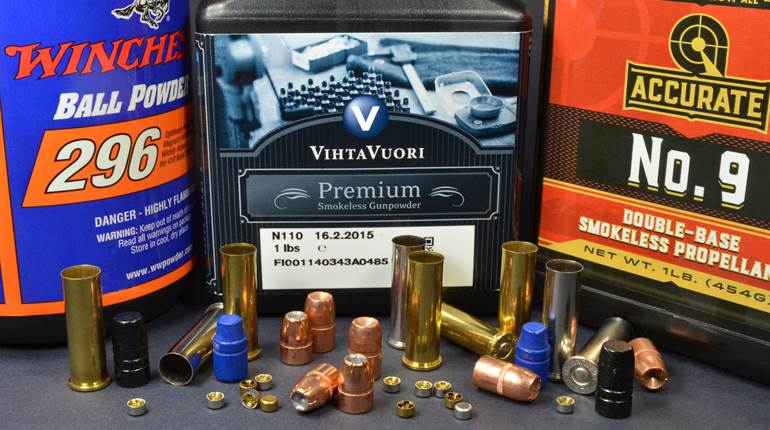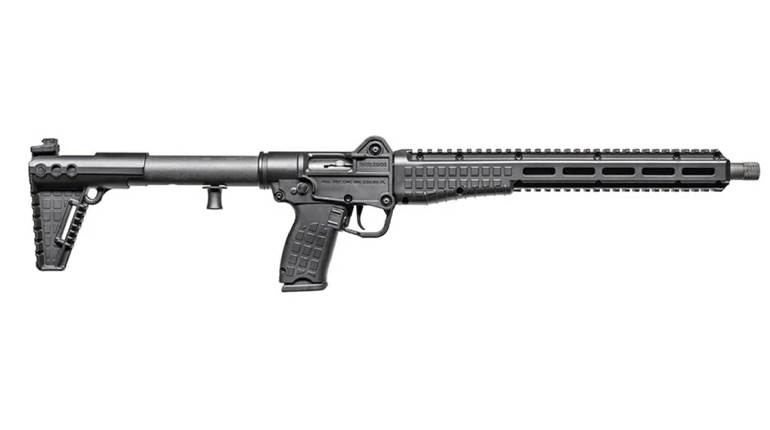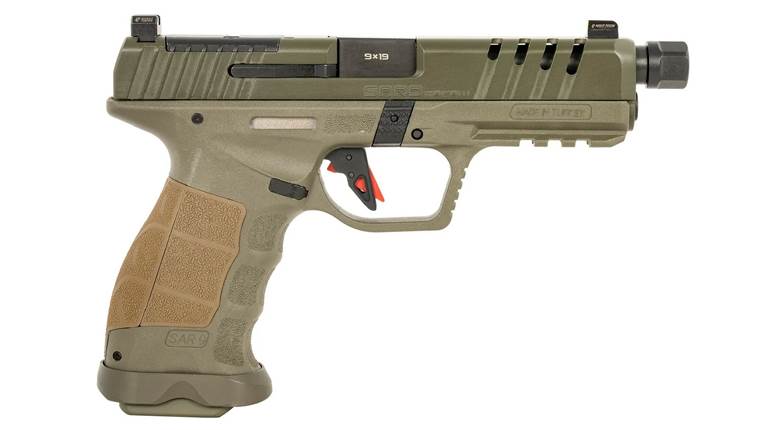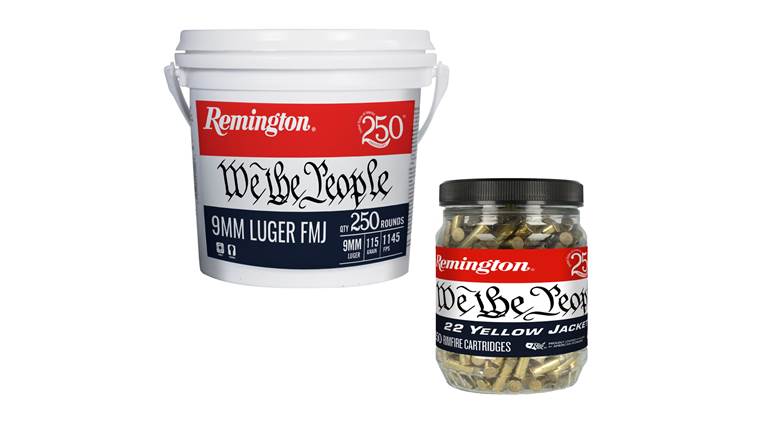
Most handguns are an exercise in compromise. The size, caliber and features are carefully measured out against the needs of the shooter. As a result, a wide variety of pistols are available for hunting, target shooting and self-defense. Some handguns, however, are an exercise in the extremes. These days the word "extreme" triggers thoughts of heavily framed hand cannons like the Desert Eagle .50 AE and Smith & Wesson .500. But there is another extreme in the spectrum, where the goal is to strip away excess size and weight to produce the smallest reliable handgun possible. It's here you'll find the North American Arms series of Mini Revolvers.
Now, before anyone starts reading me the riot act about .22 caliber handguns not providing the same level of stopping power as medium and big bore handguns, I am going to agree. Larger calibers offer more stopping power. But the primary goal of the Mini revolver design is not power, but presence. In other words, when an unexpected threat arrives, a mini revolver in the pocket trumps two .45s at home. Thousands of these diminutive revolvers are regularly employed by folks who choose to go armed, but, for whatever reason, need a handgun that is smaller than most.
I had my first opportunity to handle and shoot a North American Arms Mini years ago at a gun shop near my home. When I asked my friend at the counter to show me the Mini, I was first intrigued by its size, and then its quality. Even though it was small and affordably priced, it was sturdy and well crafted. I was very interested to see how the little gun would handle. Since this particular revolver was used, the shop manager said I was welcome to take the Mini for a quick spin on their indoor shooting range.
Like all quick spins with a quality machine, the range session was far too short. I had to give the Mini back that day, but when I had the money, I went back and bought one for myself. My early experiences with shooting Mini revolvers, and in shooting a variety of models since, have all proven to be pleasantly consistent. The quality of these revolvers is evident in their appearance and function. North American Arms' frames are light, but solidly built. The stainless-steel construction is ideal for concealed carry. The hammers feel smooth and steady as they are pulled back, and they lock firmly in place when fully cocked. The only problem I have encountered with the Minis is a rare failure to fire, but these failures were caused by the use of predictably unpredictable inexpensive bulk .22 Long Rifle ammunition.
With all of these positive qualities in mind, I need to mention that Mini Revolvers do take some getting used to. Moving from one model of handgun to another requires adjustments in grip, sight alignment and trigger control. Whether these changes are subtle or pronounced depends on the differences between the guns being fired. In my shooting experience, no other handgun is quite like a Mini, so it's helpful to have a better understanding of what to expect.
Full-size pistol grips provide space to rest the middle, ring and pinkie fingers of the shooting hand, or a three-finger grip. Compact grips tend to shave off the length that would support the pinkie, making them two-finger grips. The .22 Short and .22 Long Rifle Mini Revolvers have what I would call a one-finger grip, providing just enough room for the middle finger to wrap around completely. The .22 Mag. frames provide a longer, thicker grip profile, but they are more of a one-and-a-half-finger grip than a true two-finger grip.
Because the recoil of Mini Revolvers is mild, even with hopped-up .22 Mag. loads, it's easy to hold on to the abbreviated grip frames. Curling the ring and pinkie fingers under the middle finger creates a platform for the butt of the grip to rest on, which in turn improves control. If you find you need a little more to hold on to than your grip panels provide, North American Arms provides a variety of grip shapes and sizes you can try.
The next adjustment to make is for sight alignment. Full-size and compact pistols sit higher in the shooting hand than the Minis do. Using the top of my shooting hand as a baseline, I measured the height of the sight plane for some of my other handguns. J-Frame revolvers, for example, set the sight plane at about 1.5 inches above my hand. Standard semi-autos and double-action revolvers tend to set the sight plane at 2 inches. When I measured for the Minis, I found the sight plane was almost perfectly level with the top of my hand. This means shooters need to hold their arms up a little higher than they're used to when shooting a Mini, which can feel a little out of place until you get used to it. Personally, even though I can see the front sight is on target, the extra bit of bend in my shooting hand wrist feels like I am pointing the muzzle down toward the ground.
Finally, there is some adjusting to the trigger. The single-action trigger of the Minis is crisp, light, and produces a total travel distance of 1/8th of an inch. Curious to know what the trigger pull is for these revolvers, I tested several models with the Lyman Digital Trigger Gauge from Brownells. The group of triggers I tested averaged out at just 4 pounds 6 ounces. So what is the change in shooting technique? The trigger is a small stud instead of the slender curve common to most handguns. It takes some practice to get a feel for the placement of the pad of the trigger finger on the stud to get the best results.
Learning to shoot North American Arms' Mini Revolvers is well worth the modest amount of practice it takes to get the hang of them. This is especially true if you need an exceptionally small defensive pistol. Beyond filling an important defensive role, these revolvers are fun to shoot. I can count on the Minis to catch the eye of other shooters at the range who invariably stop to learn more about them. The .22 Mag. models can be fitted with a second cylinder chambered in .22 Long Rifle, which makes practice and plinking inexpensive indeed.
These extreme handguns offer what has become a rare commodity these days: quality at a reasonable price. North American Arms provides a wide variety of grips and holsters to complement and customize their Minis. It also provides carry options that are unique to its firearms. The staff is polite and professional, and all firearms come with a no-hassle lifetime warranty. When it comes to finding the right gun for concealed carry, size matters, and the North American Arms Mini Revolvers are smaller than most.





































